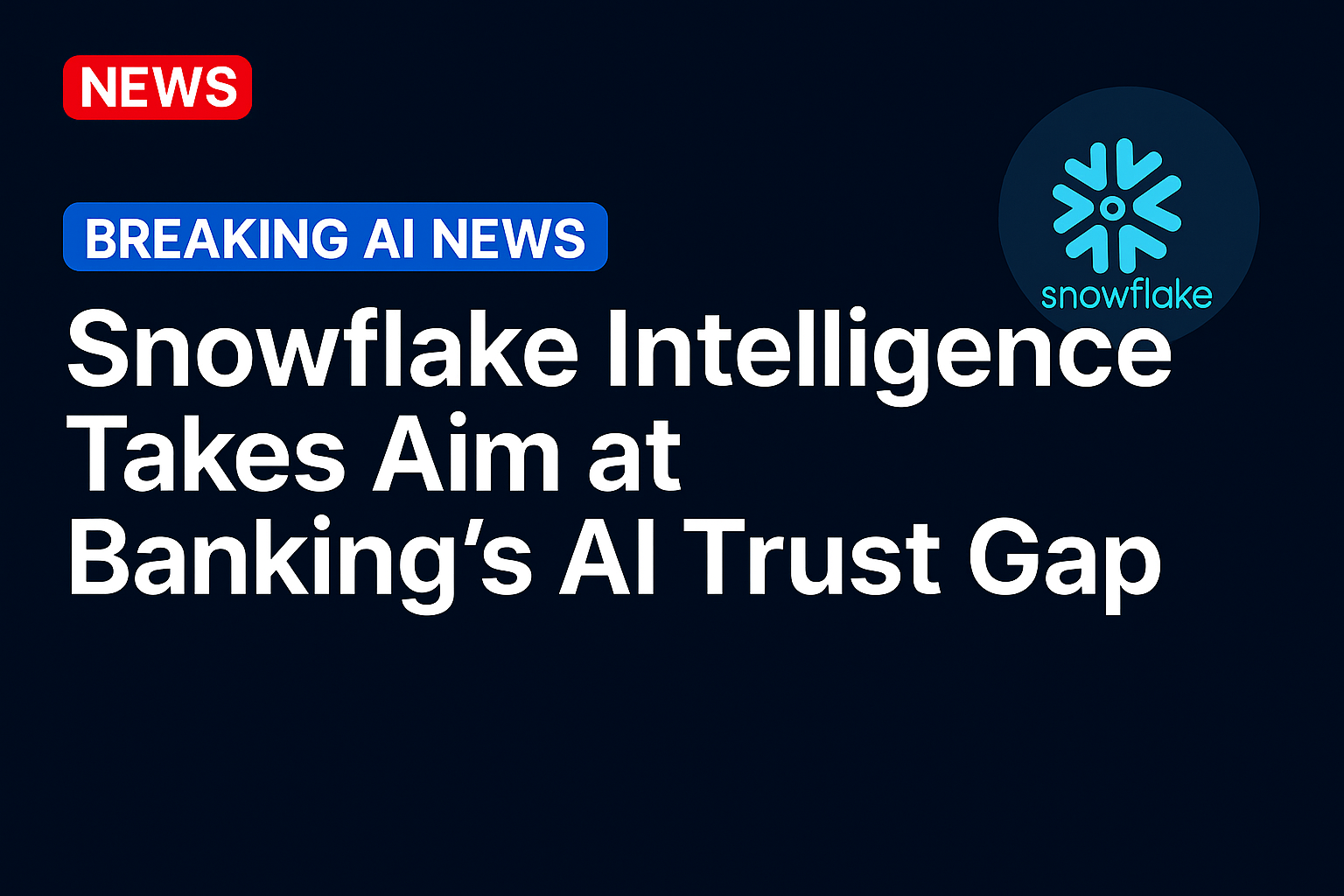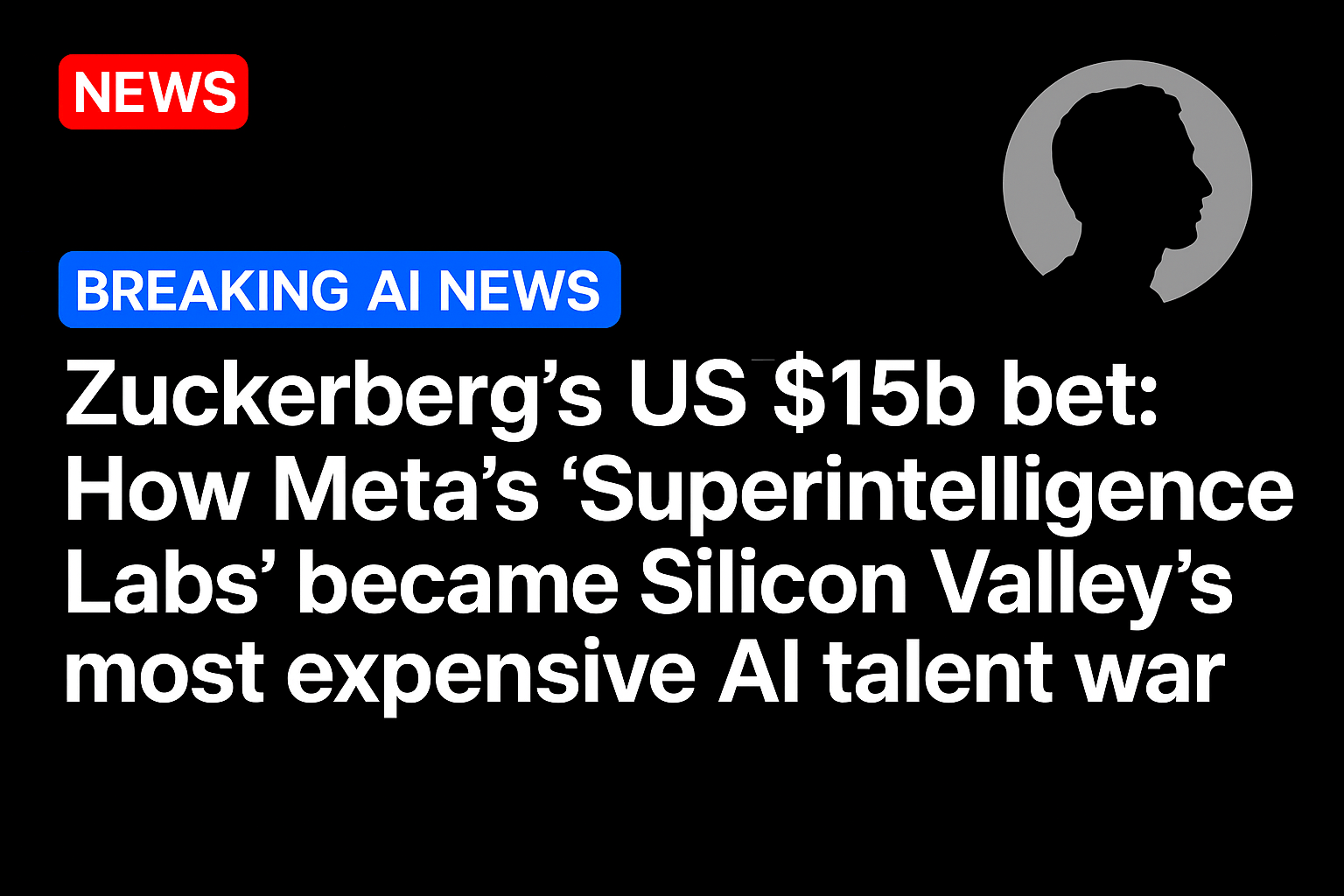As impressive as artificial intelligence (AI) in all its forms can be, its effectiveness still depends on one essential factor: the quality and governance of the data that powers it. For financial institutions that sit atop vast reservoirs of information, this connection between data and decision-making is creating both opportunity and pressure to evolve.
That evolution is the focus of Snowflake Intelligence, the new enterprise AI agent designed by Snowflake to bridge the gap between the raw material of data and the intelligence that drives outcomes. The launch marks what Snowflake is positioning as a shift from data warehousing to decision intelligence — a reimagining of how companies, particularly those in financial services, use their data to act faster, smarter and with greater confidence.
From Data Strategy to AI Strategy
“The power of AI is only as good as the data that it resides on,” Snowflake Global Head of Financial Services Rinesh Patel said in an exclusive interview with PYMNTS CEO Karen Webster in tandem with the launch. He noted that banks, insurers and asset managers “sit on a huge treasure trove of data,” but accessing and using that data efficiently has long been difficult because of fragmentation and compliance requirements.
“Our customers are on a journey to modernize their infrastructure, bring together their structured and unstructured data, and really tease out intelligence in a strategic and seamless way,” he said.
Patel described that journey as one where firms move from simply storing and protecting data to operationalizing it across the enterprise. “We are now seeing organizations democratize not just data, but insights,” he said, pointing to measurable efficiency gains and productivity improvements as companies use artificial intelligence across the entire data lifecycle.
Webster observed that financial executives are now looking for tangible value from AI rather than experimentation for its own sake. Patel agreed, saying that the most successful organizations start by defining “the commercial outcome,” then the data, and only after that the AI model. “Our customers have understood AI is more than a workload. It’s a workflow and a force multiplier of the commercial outcome,” he said.
Inside the Mechanics of Snowflake Intelligence
Snowflake Intelligence, now generally available, is built on the company’s AI Data Cloud and designed to make interaction with data conversational. The platform lets any authorized employee “talk to their data” using natural language queries rather than code, pulling insights from across multiple structured and unstructured data sources. It connects seamlessly to third-party systems such as Salesforce Data 360 through Snowflake’s Zero Copy architecture.
The intelligence layer is powered by large language models from providers such as Anthropic and uses Snowflake’s “Agent GPA” evaluation framework to improve accuracy. Internal testing has shown it can identify up to 95% of errors when performing complex text-to-SQL queries, reducing response times dramatically.
Beyond speed, the new platform is about accessibility and scale. By fine-tuning large language models within a governed data environment, customers can build multi-agent systems using Snowflake’s Cortex Agents and extend them with Cortex Knowledge Extensions.
Governance and Trust at the Core
As the financial sector embraces generative and agentic AI, Patel said, the discussion always comes back to trust. “Trust in your data is very, very important. Governed data is essential,” he said. That emphasis has shaped Snowflake’s unified approach to data and model governance, or what the company calls responsible AI.
Financial institutions must now manage not only how data is collected and stored, but how AI models are trained and used. “Organizations have to ensure accurate, reliable and valuable results while addressing issues like bias, hallucination and toxicity,” Patel said. Snowflake strengthened this focus through its recent acquisition of True Era, a company specializing in AI observability and debugging. “It helps our customers drive responsible AI, providing a level of quality and trustworthiness across the entire lifecycle,” he said.
For highly regulated industries, this capability is not optional. Patel emphasized that compliance and security are intertwined with innovation. “Financial services has always been highly regulated,” he said. “Now they have to think not just about data governance but also model and usage governance.”
Where Banks Are on the Journey
Webster asked whether banks are ready to take advantage of everything Snowflake Intelligence offers. Patel said readiness varies, but the direction is clear. “There is certainly a continuum,” he said. “It starts with the data and evolves toward a strategic application of AI. We are seeing customers move from a data strategy to an AI strategy, with data and AI in one platform.”
That progression is visible across sectors. Banks are deploying AI to optimize lending margins and reduce credit losses, while asset managers are using it to identify new sources of alpha. Payments firms and FinTechs, Patel added, are exploring real-time risk pricing. “There is a huge focus on trust and governance,” he said. “Governed data is essential, and customers are maturing quickly in their data and AI strategies.”
From Workload to Workflow
Patel described the next step in the evolution of enterprise AI as a shift “from automation to augmentation to autonomy.” In this world, AI agents do more than assist — they plan, act and make decisions.
“Historically there have been bottlenecks in data access and identification,” Patel said. “Now, through technologies like Snowflake Intelligence, we’re democratizing data and insights and redefining the experience for the industry.”
Webster said that transformation reframes how companies measure ROI. It is no longer just about savings or faster analytics, but about the return on insights — how quickly intelligence can be converted into business results. Patel agreed, saying that organizations no longer experiment with AI for its own sake. “They don’t mention AI or the hot new model until the ROI is defined, the data is defined, and the business has bought in,” he said.
Snowflake Intelligence, he said, “is about unlocking the value of your data and delivering an experience that changes how decisions get made.”
Source: https://www.pymnts.com/




